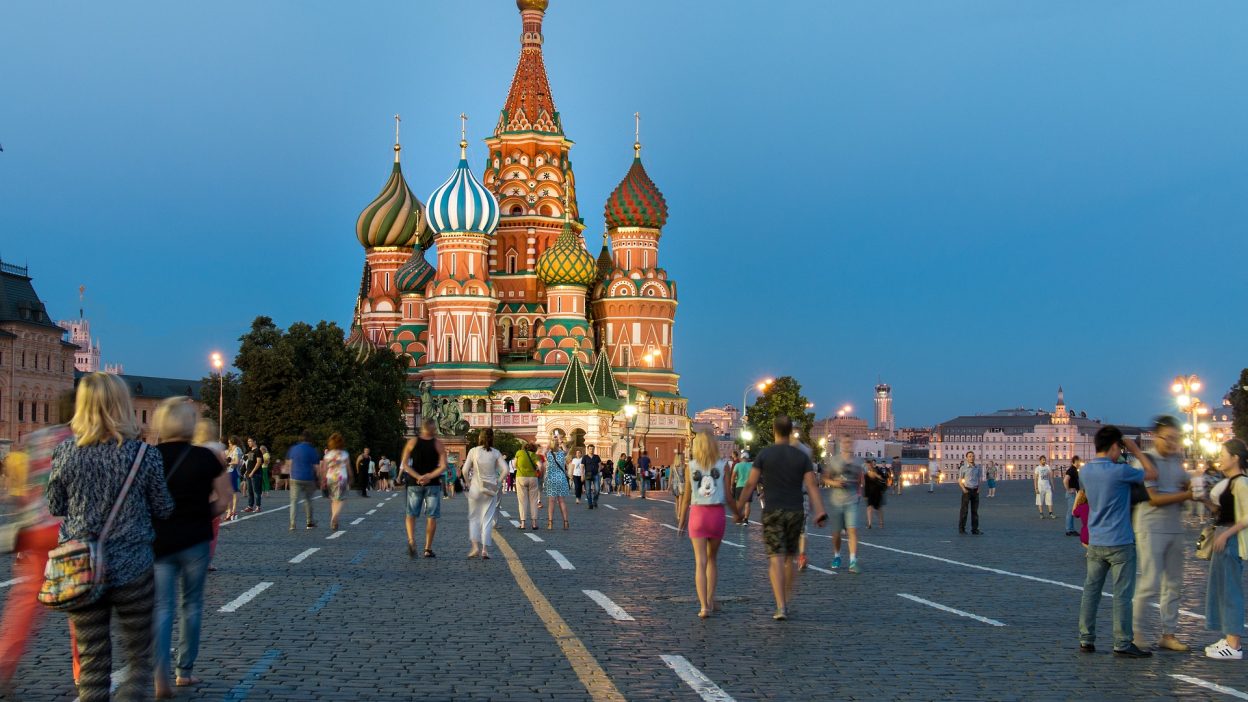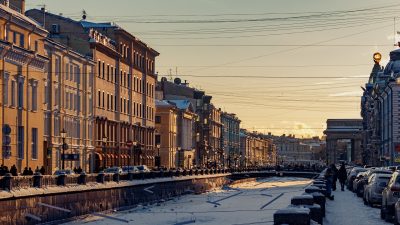Unveiling The Shocking Failures Behind One Of Russia’s Deadliest Disasters
The Earth Shook: How the 1952 Severo-Kurilsk Earthquake Changed Everything
The 1952 Severo-Kurilsk Earthquake, which struck the Kuril Islands off the coast of Russia, was one of the most devastating seismic events in the region’s history. With a magnitude of 8.2, the earthquake not only shook the earth beneath, but also led to massive destruction, causing significant loss of life and altering the course of the area’s development. The aftermath revealed deep vulnerabilities in the region’s infrastructure and disaster preparedness, making it clear that this event was a wake-up call for many.
As the tremors of the earthquake were felt throughout the Kuril Islands, entire communities were decimated, and survivors faced dire conditions. The damage was compounded by the tsunami that followed, leaving a lasting impact on the local population. The 1952 disaster also opened up discussions about the potential for better earthquake preparedness and response strategies. It marked a pivotal moment for Severo-Kurilsk, and its effects reverberated long after the event itself.
The Untold Truth Behind the 1952 Severo-Kurilsk Disaster
The 1952 Severo-Kurilsk earthquake wasn’t just a natural disaster; it was the result of multiple systemic failures. The region’s vulnerability was already known, but the lack of a robust disaster management system and proper building codes amplified the destruction. Many buildings and structures, unable to withstand the force of the tremor, collapsed, leaving thousands of people homeless. What remains untold, however, is the hidden impact on the psychological well-being of the survivors, who faced years of trauma and displacement.
Further complicating the aftermath were issues with the response efforts. The government’s actions were often delayed, and when aid did arrive, it was insufficient to meet the overwhelming needs of the affected population. There was little coordination between local authorities and national relief efforts, leading to gaps in immediate aid distribution. Despite these shortcomings, the earthquake acted as a catalyst for change, leading to improvements in future disaster response systems.
Shattering Lives: The Hidden Consequences of the 1952 Severo-Kurilsk Earthquake
- Emotional Toll on Survivors: The psychological effects of the earthquake were profound. Survivors not only lost their homes, but many lost family members and friends. The trauma of such a violent event left many with long-lasting emotional scars, making recovery even more difficult. Psychological support was lacking, and those who managed to survive often found themselves living in constant fear of aftershocks and tsunamis.
- Economic Collapse: The destruction of key infrastructure, including roads, bridges, and buildings, crippled the local economy. Many businesses were forced to close, and the unemployment rate skyrocketed as residents were left without means of support. The immediate financial toll was enormous, and the region struggled to recover economically for years.
- Displacement and Migration: As a result of the extensive damage, large numbers of people were displaced. Many had no choice but to leave their homes and migrate to other parts of the country in search of safety and stability. This led to overcrowding in nearby regions, further straining resources and creating social tensions.
Why the 1952 Severo-Kurilsk Earthquake Was More Destructive Than We Thought
- Lack of Preparedness: The region was underprepared for a disaster of this scale. With no earthquake-resistant buildings and inadequate early warning systems, the population was left vulnerable. The lack of preparedness amplified the destruction and loss of life.
- The Tsunami Effect: After the earthquake, a massive tsunami struck, causing even more devastation. The combined effect of the earthquake and the tsunami was catastrophic, with waves reaching up to 15 metres in height, overwhelming coastal areas. The tsunami intensified the already severe damage caused by the earthquake itself.
- Long-Term Infrastructure Failure: The earthquake exposed serious weaknesses in the infrastructure, especially in terms of seismic safety. Roads and bridges were destroyed, hampering rescue and relief efforts. The slow rebuilding process further delayed recovery, leaving the area economically and socially weakened for years.
The Aftermath of the 1952 Severo-Kurilsk Earthquake: Was the Response Enough?
In the wake of the disaster, the response from both local and national authorities fell short. Despite the scale of destruction, aid arrived too slowly and wasn’t enough to address the immediate needs of the affected communities. The lack of effective coordination and planning hindered relief efforts, causing frustration and anger among survivors. Additionally, while some efforts were made to rebuild, it took years for the region to recover fully.
The government’s response highlighted several issues, including the absence of adequate disaster response protocols and a lack of trained personnel to handle such large-scale disasters. Furthermore, international assistance was limited, as the Soviet Union at the time had tightly controlled its external relations. This meant that the affected population had to rely mostly on local resources, which were insufficient.
Could We Have Prevented the 1952 Severo-Kurilsk Earthquake? The Shocking Facts
- Seismic Predictions: Although earthquakes are notoriously difficult to predict, scientists at the time had some understanding of the region’s seismic activity. However, there were no significant measures in place to forecast such a powerful earthquake or mitigate its impact.
- Early Warning Systems: One of the most crucial failings was the absence of an early warning system. A robust system could have provided residents with critical minutes to evacuate and take shelter. If such systems had been in place, the loss of life might have been significantly reduced.
- Building Regulations: The earthquake revealed the inadequacy of building regulations in the region. The lack of earthquake-resistant buildings played a major role in the devastation. Had there been stronger enforcement of building codes, many structures might have survived the quake, reducing the damage significantly.
When Earthquake Strikes: How the 1952 Severo-Kurilsk Earthquake Revealed Our Vulnerabilities
- Inadequate Emergency Services: The earthquake laid bare the weaknesses in emergency services, with insufficient resources, manpower, and equipment to respond to such a large-scale disaster. Hospitals were overwhelmed, and there was a shortage of medical supplies and personnel to care for the wounded.
- Weak Infrastructure: The failure of key infrastructure systems such as power lines, water supply, and communication networks further exacerbated the crisis. The region’s inability to cope with the demands of such a devastating event made it clear that major improvements were necessary.
- Community Disintegration: The disaster also highlighted the lack of community preparedness and organisation. Many residents were left to fend for themselves in the face of overwhelming destruction, with little to no guidance from authorities.
The 1952 Severo-Kurilsk Earthquake Catastrophe: What the Media Didn’t Tell You
The media coverage of the 1952 Severo-Kurilsk earthquake was limited, as the Soviet Union tightly controlled information at the time. Many details about the scale of the disaster and the suffering of the population were kept from the outside world. The true extent of the damage was not fully realised until years later, when survivors and experts began to speak out.
Even after the event, the media downplayed the human cost and the shortcomings of the government’s response. This lack of transparency contributed to a sense of isolation and abandonment for those affected. Only in later decades did the full scope of the tragedy emerge, revealing just how much was hidden from public view.
Conclusion: The Legacy of the 1952 Severo-Kurilsk Earthquake: What We Must Never Forget
The 1952 Severo-Kurilsk earthquake serves as a stark reminder of the importance of preparedness and robust disaster management. The devastation it caused underscored the need for stronger building codes, early warning systems, and coordinated response efforts. While the region has made strides in improving these aspects since the disaster, the legacy of the earthquake remains a poignant lesson in disaster risk reduction.
As we face future earthquakes and other natural disasters, it is crucial to remember the mistakes of the past and work towards building a more resilient world. The Severo-Kurilsk earthquake may have happened over half a century ago, but its lessons are still relevant today.
FAQs
- What caused the 1952 Severo-Kurilsk Earthquake? The earthquake was caused by tectonic activity in the Kuril Islands, where the Pacific plate subducts beneath the Eurasian plate, creating immense seismic pressure.
- How many people died in the 1952 Severo-Kurilsk Earthquake? Approximately 2,336 people were killed, with many more injured and displaced as a result of the earthquake and subsequent tsunami.
- What were the main areas affected by the earthquake? The earthquake primarily affected the Severo-Kurilsk region of the Kuril Islands, with widespread damage to homes, infrastructure, and local industries.
- How did the Russian government respond to the earthquake? The government’s response was slow, with aid arriving too late to provide adequate relief. Recovery efforts were hampered by a lack of resources and coordination.
- What lessons have been learned from the 1952 Severo-Kurilsk Earthquake? The disaster highlighted the need for stronger building regulations, better disaster preparedness, and more effective early warning systems to mitigate the impact of future earthquakes.
Reference:
1952 Severo-Kurilsk Earthquake – Wikipedia
https://en.wikipedia.org/wiki/1952_Severo-Kurilsk_earthquake
1952 Kamchatka Peninsula Tsunami – Earthweb
https://earthweb.ess.washington.edu/tsunami/general/historic/kamchatka52.html
The November 4, 1952, Kamchatka Earthquake and Tsunami – Dr. George Pararas-Carayannis
https://www.drgeorgepc.com/Tsunami1952.html
Kamchatka Earthquakes – Wikipedia
https://en.wikipedia.org/wiki/Kamchatka_earthquakes
1952 Severo-Kurilsk Tsunami – Wikidata




